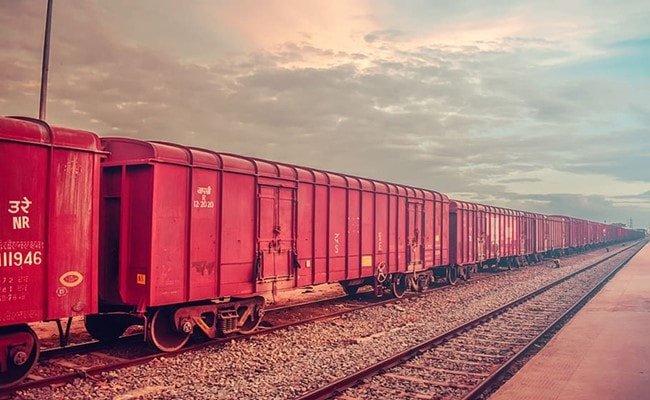By Shri L Mony, Central Working President, All India Loco Running Staff Association

Freight Traffic at a Standstill
India today is witnessing a disturbing reality: the very locomotives designed to carry the nation’s economic backbone—its freight—are lying idle at wayside stations. Powerful WAG-12 locomotives and other high-capacity engines, once proudly imported and celebrated, now stand motionless due to an acute shortage of trained Goods Loco Pilots.
This is not merely an operational failure; it strikes at the heart of India’s economic infrastructure. Railways provide the world’s cheapest freight transport system, a system crucial for moving coal, food grains, raw materials, and industrial goods across the subcontinent.
The recent power shortages in coal-dependent states like Jharkhand, which led to large-scale blackouts, underscore how fragile the supply chain has become. When freight traffic halts, the consequences ripple outward, affecting not just industry but ordinary citizens. The cornerstone of India’s economic stability—its capacity to move freight efficiently—is now shaking.
Railway Recruitment Board: From Efficiency to Delay
The Railway Recruitment Board (RRB), established to ensure transparent and timely appointments, once functioned with remarkable efficiency. Even during the paper-based era of the 1980s, candidates were appointed within eight or nine months of submitting applications. This timely recruitment ensured a steady flow of manpower to keep operations running smoothly.
Today, however, the RRB’s performance paints a very different picture. The examination process for 18,000 Loco Pilot posts notified in January 2024 has stalled indefinitely. Without concluding that recruitment, another notification was issued in 2025, yet even the first stage of the examination has not been held.
This inefficiency is not just an administrative inconvenience; it has real-world consequences. In an era where artificial intelligence and digital platforms can process vast amounts of data in seconds, the RRB’s delay is both inexplicable and unacceptable. Even if not operating at 5G speed, India’s youth deserve at least the equivalent of 3G efficiency in their recruitment processes. Instead, lakhs of young, unemployed candidates wait endlessly, their aspirations suspended in uncertainty.
Consequences of Abandoning Rail Freight
If freight movement by rail continues to falter, industrialists will inevitably shift to transporting goods by road. While this may keep supply chains moving, the cost implications are severe. Road transport is far more expensive than rail, and the increased freight charges will ultimately be passed on to consumers.
Thus, the ordinary citizen—the common man—is left to shoulder the financial burden of this systemic failure. The rising cost of essential commodities, coupled with already high inflation, will intensify the strain on household budgets.
Mismanagement and Its Real Causes
Railway workers argue that the decline in efficiency is not simply due to technical or logistical hurdles but stems from deliberate mismanagement. Junior railway officers, in pursuit of personal recognition and awards, often fail to report vacancies to higher authorities in a timely manner. This practice creates an artificial shortage of manpower, paralyzing operations and misleading policymakers.
Such negligence has had devastating effects: recruitment has slowed, vacancies have multiplied, and the very economic lifeline of the nation—freight movement—has been weakened.
It is vital to recognize that today’s unemployed youth are tomorrow’s nation-builders. Providing them with employment is not only a matter of social justice but also a strategic investment in the future of the country. A job in one household contributes to the progress of that family, which in turn contributes to the progress of the nation.
The Strike That Exposed the Truth
The severity of the problem was revealed during the June 2024 strike organized by the All India Loco Running Staff Association (AILRSA). Initially, the Railways announced only 3,000 vacancies, a figure derived from misleading data presented to the Railway Minister.
In response to growing pressure, the Ministry increased the number to 5,000. However, the strike brought greater transparency. The Railway Minister himself later admitted that the true number of vacancies was more than 18,000 in 2024. In 2025, this number rose further, with over 9,000 additional vacancies declared.
The strike did more than secure revised numbers; it exposed the false calculations and short-sighted decisions of railway officers who had downplayed the crisis.
Looking Ahead: A Call for Accountability
India’s youth now look to the Railway Minister with hope. They expect not only honesty in vacancy reporting but also accountability and speed in the recruitment process. The sluggish performance of the RRB must be addressed urgently, with reforms to ensure that examinations are conducted on time, vacancies are filled without delay, and manpower shortages are resolved.
The stability of India’s freight system—and by extension, its economy—depends on decisive action. The stakes are too high to allow bureaucratic inefficiency or self-serving practices to dictate the future of the world’s fourth-largest railway network.
YOUNG INDIA
